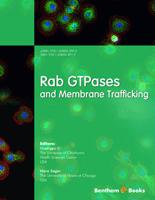The aim of this book is to provide an updated revision of the most important and simple methods to analyze enzymatic activity. Qualitative and quantitative methods for the industrial enzymes are described.
Microbial enzymes are increasingly replacing conventional chemical catalysts in a range of industrial processes in industrial since the process of biocatalys is ecologically correct. Moreover, the conditions to obtain and optimize the production of enzymes are easily controlled in bioreactors and the microorganisms can also be manipulated genetically to improve the desirable characteristics of a biocatalyzer. The main industries that apply microbial enzymes are: the food, textile, leather, biofuel pharmaceutical, cosmetics, fine chemicals, biomaterials, paper and cellulose and detergent industries. In this context a comprehensive overview of the methods used for enzyme detection would be useful. The book contains 13 chapters and presents the main methods to analyze the activity of pectinases, peroxidases, chitinases, cellulases, amylases, xylanases, lipases, phenoloxidase, transglutaminases, keratinases, peptidases, tannases and ureases.
The 1st chapter of this book is about the pectinases, one of the enzymes presently gaining much attention in the fruit and textile industries. This chapter describes the current state of knowledge of the main assays used to quantify pectinolytic enzymes and their activity. The second chapter focuses on the peroxidases. These enzymes are ubiquitous enzymes that catalyze the oxidation of lignin and other phenolic compounds at the expense of hydrogen peroxide (H2O2) in the presence of a mediator. They have been classified into many types based on their source and activity. One of the major application of the peroxidases is in the bioremediation processes.
In the 3rd and 4th chapter, the chitinases and cellulases are discussed. Chitinolytic enzymes are gaining importance due to their biotechnological applications. Particularly, chitinases are used in agriculture to control plant pathogens.The main methods for the detection and measurement of chitinolytic activity will be presented. Cellulase has been used in the bioconversion process of lignocellulosic materials into bioethanol and biobased products, within the biorefinery concept. Also, cellulases have been widely used in various industries such as the textile, food, beer and wine, animal feed, pulp and paper industries. This chapter describes the current state of knowledge on assays for the glycoside hydrolase complex.
The 5th chapter describes enzymes the detection methods for all types of amylase, a group of important industrial enzymes with applications in food production, and the production of sugars from starch.
Xylanase and lipases detection methods are respectively in the 6th and 7th chapter. Xylanases play a vital role in depolymerizing xylan, the major component of hemicellulose. These enzymes have been used in traditional fields such as food, animal food and paper industries. The use of xylanase in producing sugars and other chemicals from lignocelluloses in recent years is increasing. Lipases hydrolyze triacylglycerols to fatty acids, diacylglycerols, monoacylglycerols and glycerol and under certain conditions, catalyze reverse reactions such as esterification and transesterification. They are used in various industries such as: the food, waste water treatment, cosmetics, biodiesel, pharmaceutical and detergent industries, as well as in biofuels.
The 8th chapter is about phenoloxidase, which are copper enzymes that catalyze the oxidation of phenolic compounds. Transglutaminases are focused in chapter 9th. They are biological “glues” capable of catalyzing acyl transfer reactions by introducing covalent cross-links between proteins, as well as peptides and various primary amines. Their most important use is in the food industry.
Qualitative and quantitative methods for peptidases and keratinases are described in the chapters 10 and 11 respectively. The proteolytic enzymes account for 25% of the industrial enzyme market and present multiple applications including the food and detergent industry, cosmetic, animal food, leather depilation, textile Pharmaceutical sectors.
Lastly, the chapters 12 and 13 report the major methods used for tannases and ureases. Tannases are acyl hydrolases that act on tannins. The major uses are in the production of gallic acid and glucose, beer processing and clarification of juices and the ureases catalyze the hydrolysis of urea into ammonia and carbon dioxide. They are mainly important in agriculture, medicine and clinical analysis. We would like to thank the authors for their excellent work, their dedication and updated information.
Alane Beatriz Vermelho
Institute of Microbiology Paulo de Góes
Biotechnology Center- Bioinovar
Federal University of Rio de Janeiro
Rio de Janeiro
Brazil
Sonia Couri
Federal Institute of Education
Science and Technology of Rio de Janeiro
Rio de Janeiro
Brazil




